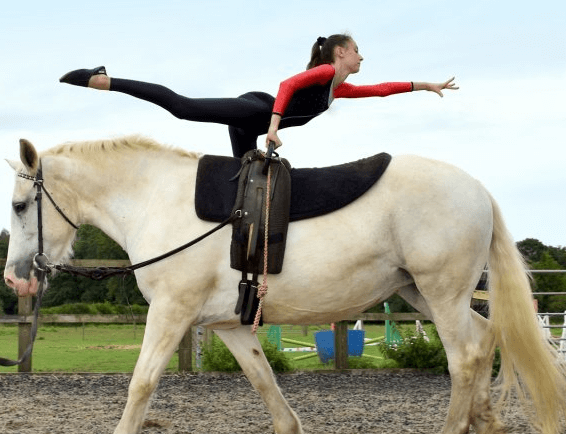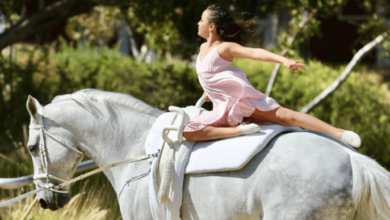What is the history of equestrian vaulting?

Equestrian vaulting, often described as gymnastics and dance on horseback, is a unique and captivating sport with roots that date back thousands of years. Combining athleticism, artistry, and a deep connection between horse and rider, vaulting has evolved over centuries into an organized sport enjoyed worldwide. To understand the full scope of equestrian vaulting, it’s essential to explore its rich and diverse history, from ancient beginnings to its current status in the equestrian world.
Ancient Origins of Equestrian Vaulting
The history of equestrian vaulting can be traced back to ancient civilizations, where humans first began to interact closely with horses. While not initially a competitive sport, the practice of performing acrobatic feats on horseback was deeply integrated into the cultures of ancient societies.
1. Ancient Rome and the Circus Games
The most well-documented early example of equestrian vaulting comes from ancient Rome, particularly during the time of the circus games. These games were massive public spectacles that featured a variety of equestrian displays, including vaulting-like performances. Roman riders would demonstrate their agility and control by performing intricate maneuvers on horseback, often in front of thousands of spectators. This form of entertainment was more theatrical than athletic, but it laid the foundation for later developments in equestrian vaulting.
Roman cavalry training also incorporated mounted gymnastics as a way to prepare soldiers for combat. These exercises helped cavalrymen develop balance, coordination, and confidence while riding into battle. The ability to quickly mount or dismount, even while the horse was in motion, was a valuable skill on the battlefield.
2. Early European Influence
In medieval Europe, vaulting-like activities became a part of knightly tournaments and festivals. Knights and squires would practice mounted exercises as part of their training regimen, and these exercises included some early forms of vaulting. Riders performed stunts to demonstrate their skill in controlling their horses, often while wearing armor or costumes. Over time, these exhibitions took on a more artistic and ceremonial role, particularly during royal events and public festivities.
The Evolution of Equestrian Vaulting in Modern Europe
The transition from ancient and medieval displays to the modern sport of equestrian vaulting began in Europe, where organized training on horseback began to take shape in military and aristocratic circles.
1. 17th and 18th Centuries: Development in Germany
By the 17th century, equestrian vaulting had established a foothold in Germany, where it was known as “Voltigieren.” In this period, it began to shift from purely functional military training to a form of performance art. Horse trainers and riders started to incorporate more sophisticated movements, blending gymnastics and acrobatic techniques with riding.
One of the key figures in this evolution was French riding master François Robichon de La Guérinière. In the 18th century, he developed a method of horse training that emphasized the harmony between rider and horse. His methods influenced vaulting as riders sought to develop not only their physical abilities but also a strong connection with the horse.
2. Circus Vaulting in the 19th Century
During the 19th century, the rise of the modern circus played a significant role in the popularization of vaulting. Circus performers took the vaulting skills practiced by cavalrymen and transformed them into daring acrobatic acts. These performances captivated audiences across Europe and North America, showcasing the athleticism and artistry of both the riders and their horses. The stunts became more elaborate, with riders executing flips, spins, and even jumping from horse to horse.
This circus style of vaulting became known as “Cossack vaulting,” a nod to the horsemanship of the Cossack people, who were renowned for their equestrian skills. While this type of vaulting was primarily for entertainment, it continued to develop the technical and athletic components that would later influence competitive vaulting.
Equestrian Vaulting as a Competitive Sport
The shift from equestrian vaulting as a form of entertainment to an organized competitive sport began in the early 20th century. Several factors contributed to this transformation, particularly in Europe, where the discipline gained structure and formalized rules.
1. Vaulting in Germany and Austria
In the 1920s and 1930s, vaulting gained popularity as a training method for young riders in Germany and Austria. Recognizing the benefits of vaulting for balance, coordination, and teamwork, riding schools began incorporating it into their programs. This laid the groundwork for vaulting to be recognized as a competitive sport.
2. Post-World War II Developments
After World War II, vaulting experienced a revival in Europe, particularly in Germany, Switzerland, and Austria. Riding schools and equestrian clubs started to organize vaulting competitions, and the sport began to grow in popularity. This post-war period saw the standardization of vaulting techniques, movements, and equipment. The introduction of formal judging criteria helped vaulting to transition from a performance art to a competitive discipline.
In 1960, equestrian vaulting was introduced to the international stage when it was featured as an exhibition sport during the Rome Summer Olympics. This event helped bring global attention to the sport and sparked interest in vaulting outside of Europe.
Modern Equestrian Vaulting and International Competitions
Today, equestrian vaulting is an internationally recognized sport with a growing community of participants and spectators. The development of formal governing bodies and competitive leagues has helped vaulting flourish as a legitimate equestrian discipline.
1. The Formation of the International Federation for Equestrian Sports (FEI)
In 1983, the International Federation for Equestrian Sports (FEI) officially recognized equestrian vaulting as a competitive sport. This recognition was a significant milestone, as it established vaulting as one of the seven official FEI disciplines. The FEI oversees international vaulting competitions, including the World Equestrian Games and the European Championships.
With FEI recognition came the establishment of strict rules and guidelines for vaulting competitions. Competitors are judged on their ability to perform a series of compulsory exercises, technical moves, and freestyle routines, all while maintaining harmony with their horse.
2. Growth of the Sport in the 21st Century
In recent decades, equestrian vaulting has continued to grow in popularity around the world. While Europe remains the sport’s epicenter, vaulting has spread to other regions, including North America, South America, and Australia. The United States and Canada, in particular, have seen a rise in vaulting clubs and competitive teams.
Modern vaulting competitions are divided into different levels based on the vaulters’ skill and experience. There are individual, pair (pas de deux), and team events, with each category offering a unique blend of athleticism and artistry. Vaulters perform on a horse that is lunged in a circle, allowing the horse to maintain a steady rhythm as the vaulter performs their routine.
Vaulting has also been recognized for its therapeutic benefits. Many equestrian therapy programs use vaulting to help individuals with physical and cognitive disabilities develop coordination, strength, and confidence. The connection between horse and vaulter, combined with the physical challenges of the sport, makes vaulting a valuable tool in therapeutic settings.
Conclusion
The history of equestrian vaulting is a testament to the enduring bond between humans and horses. From its early beginnings in ancient Rome to its modern status as an internationally recognized sport, vaulting has evolved into a discipline that combines athleticism, creativity, and horsemanship. As vaulting continues to grow in popularity, it serves not only as a competitive sport but also as a celebration of the unique partnership between horse and rider. With its deep roots and bright future, equestrian vaulting remains one of the most fascinating and dynamic equestrian disciplines in the


